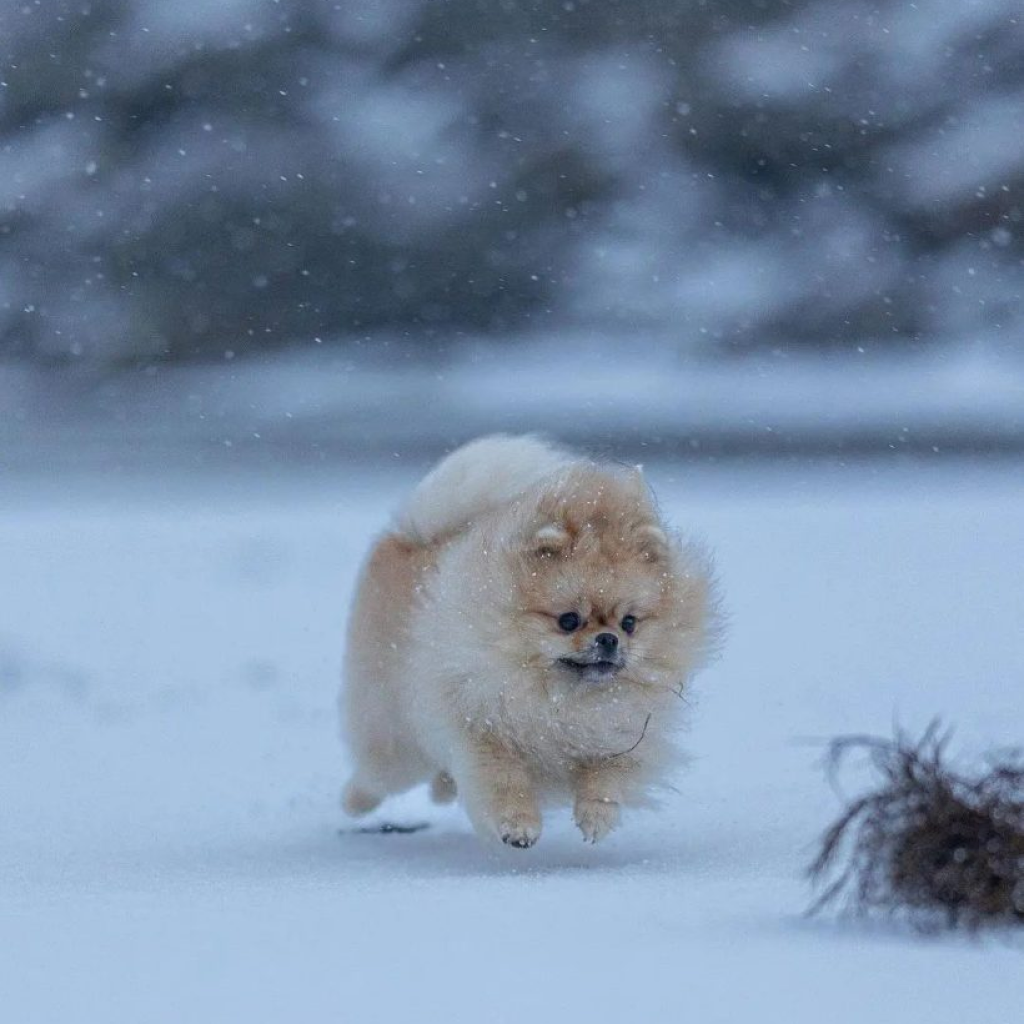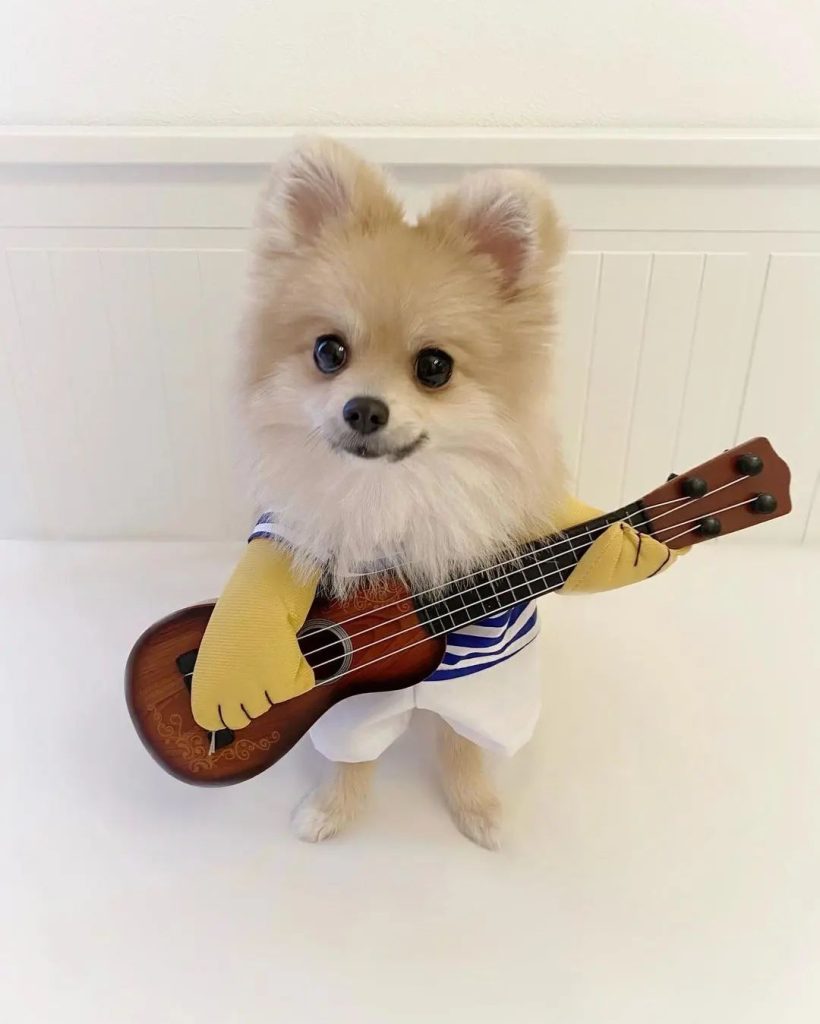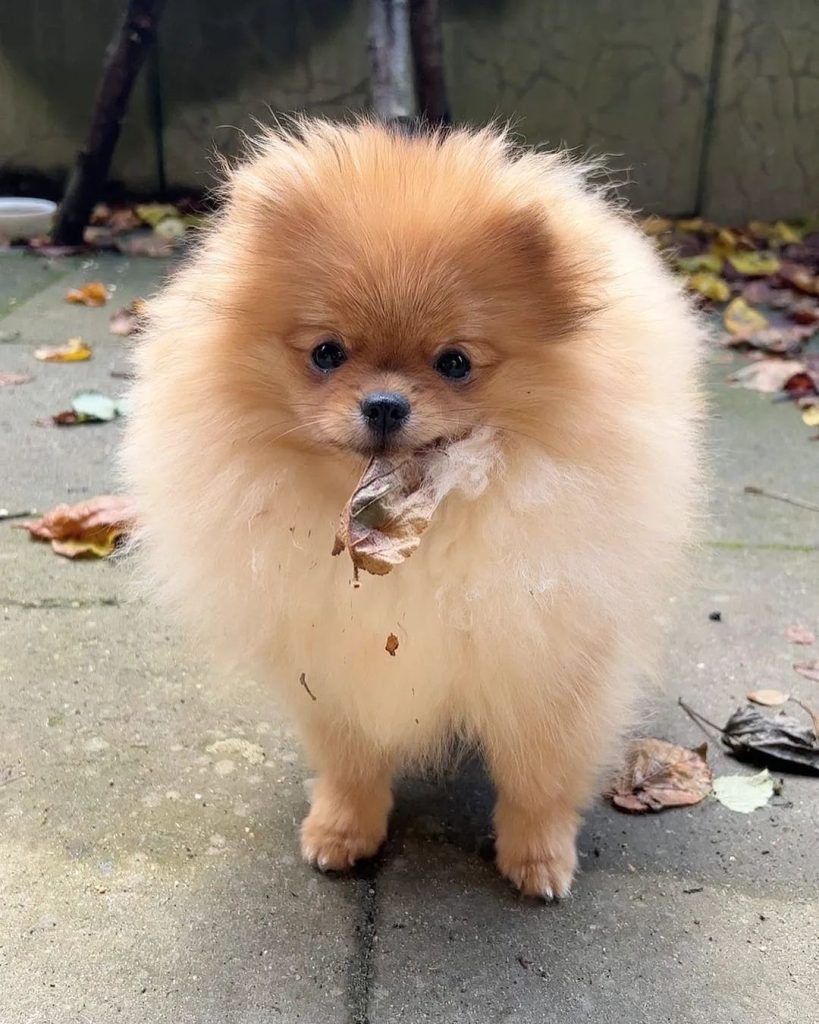
Ultimate Guide to Dog Training and Care
Training and caring for a Pomeranian is a unique journey filled with challenges and joys. Known for their distinctive fluffy coats and vibrant personalities, Pomeranians require a specialized approach to training that balances firm guidance with positive reinforcement. These small yet bold dogs respond best to consistent and patient training methods. Key aspects of their care include regular grooming to maintain their luxurious fur, appropriate exercise to channel their energy, and a nutritious diet tailored for their small stature. Socialization is also crucial in developing a well-rounded and confident Pomeranian. Early exposure to various environments and people helps prevent behavioral issues. Ultimately, understanding and catering to the specific needs of your Pomeranian will lead to a rewarding companionship filled with love and mutual respect.
Understanding Different Pomeranian Types and Personalities
Pomeranians are not a one-size-fits-all breed; they come in various types, each with unique characteristics and personalities. Recognizing these differences is critical to practical training and care:
- Teddy Bear Pomeranian: Characterized by a short snout and a round, teddy bear-like face, these Pomeranians are often known for their affectionate and cuddly nature. They tend to be friendly and outgoing, making them excellent companions.
- Baby Doll Pomeranian: With a slightly longer snout than the Teddy Bear type, Baby Doll Pomeranians have a sweet and endearing appearance. They are usually gentle and calm, making them suitable for families with children.
- Fox Face Pomeranian: This type has a more elongated snout, resembling a fox. Fox Face Pomeranians are typically alert, intelligent, and more independent than the other types. They can be spirited and may require more engaging training sessions.
Understanding these variations can help owners tailor their approach to training and socialization, ensuring a happy and well-adjusted Pomeranian.
Comprehensive Pomeranian Puppy Care
Caring for a Pomeranian puppy involves a holistic approach beyond essential feeding and grooming. Firstly, establishing a regular veterinary care routine is crucial. This includes vaccinations, deworming, and regular check-ups to ensure your puppy’s health and development are on track.
Nutrition plays a pivotal role in a Pomeranian puppy’s growth. Opt for high-quality puppy food that caters to the nutritional needs of small breeds. Portion control is essential to prevent obesity, a common issue in smaller dogs.
Grooming is another crucial aspect. Pomeranian puppies should become accustomed to regular brushing from an early age. This maintains their coat and helps build a bond between the puppy and the owner.
Early socialization and training are vital. Exposing your Pomeranian puppy to various sights, sounds, and experiences ensures they grow into well-adjusted adults. Gentle, consistent training establishes a foundation for good behavior.
Lastly, creating a safe and nurturing environment is essential for your puppy’s well-being. This includes a comfortable sleeping area, safe toys, and plenty of love and attention.
Your Pomeranian puppy can grow into a healthy, happy, and well-behaved companion through comprehensive care.
Exploring the Spectrum of Pomeranian Colors

From Orange to White: The Diversity of Pomeranian Coat Colors
Pomeranians boast a dazzling array of coat colors, each with unique charm. Some of the most common and admired colors include:
- Orange: The classic and most recognizable Pomeranian color. These vibrant dogs often have a lush, golden-orange coat that is striking and endearing.
- Black: Sleek and elegant, black Pomeranians have a glossy coat that exudes sophistication. They can range from jet black to a softer charcoal hue.
- White: Rare and exquisite, white Pomeranians have a pure, snowy coat. Their pristine appearance requires diligent grooming to maintain its brightness.
- Cream: These Pomeranians have a soft, creamy coat, often with shades ranging from light beige to a deeper, honey-like color.
- Blue: A more uncommon color, blue Pomeranians have a unique silvery-blue coat resulting from a dilution gene. This rare coloration is highly sought after.
- Merle: Merle Pomeranians are known for their mottled patches of color and can have blue or odd-colored eyes. This striking pattern is both distinctive and visually appealing.
- Chocolate: Chocolate Pomeranians have a rich, deep brown coat. They often have brown noses and eye rims, distinguishing them from black Pomeranians.
Each color has its unique genetic makeup and may influence the dog’s grooming needs. Understanding these nuances can help owners provide the best care for their colorful companions.
How To Train Your Pomeranian With Separation Anxiety
Separation anxiety is a common challenge faced by many Pomeranian owners. This breed’s strong bond with their humans can lead to distress when left alone. Recognizing and addressing this issue is crucial for the emotional well-being of your Pomeranian.
Recognizing Signs of Separation Anxiety
Typical signs include excessive barking or howling, destructive behavior, and signs of distress like pacing or shaking when they sense you’re about to leave. Some Pomeranians may also refuse to eat or have accidents indoors when alone.
Providing Solutions
- Gradual Desensitization: Start by leaving your Pomeranian alone for short periods, gradually increasing the duration. This helps them understand that you will return, reducing anxiety over time.
- Creating a Safe Space: Establish a comfortable area for your Pomeranian where they feel secure. This could be a crate or a room with their favorite toys and bedding.
- Mental Stimulation: Engage your Pomeranian with a puzzle or treat-dispensing toys that keep them occupied while you’re away. Mental stimulation is vital in reducing anxiety.
- Routine and Exercise: A consistent daily routine and sufficient exercise can help reduce anxiety levels in Pomeranians. Regular walks and playtime ensure they are physically and mentally satisfied.
- Professional Assistance: If the separation anxiety is severe, seek help from a professional dog trainer or behaviorist. They can provide tailored strategies to help your Pomeranian cope better.
Understanding and addressing separation anxiety can help your Pomeranian feel more relaxed and secure, even in your absence.
Mastering the Basics of Pomeranian Training: Bark, Crate, Obedience Training
Training a Pomeranian requires patience, consistency, and understanding of their unique characteristics. As intelligent dogs, they respond well to training, but their independent nature can sometimes pose a challenge.
Establishing Respect and Effective Communication
- Building Trust: The foundation of successful Pomeranian training lies in establishing a bond of trust and respect. This involves understanding their needs and responding to them appropriately. Positive reinforcement, like treats and praise, encourages good behavior.
- Clear Communication: Pomeranians are sensitive to their owner’s tone of voice and body language. Using clear, consistent commands helps them understand what is expected of them. It’s essential to be firm but gentle in your approach.
- Training Sessions: Short, engaging training sessions are more effective for Pomeranians. Due to their small attention spans, keeping sessions brief but frequent can yield better results.
- Basic Commands: Start with commands like ‘sit,’ ‘stay,’ ‘come,’ and ‘heel.’ These foundational commands teach discipline and enhance your Pomeranian’s safety.
- Consistency is Key: Consistency in training and expectations is crucial. Mixed signals can confuse your Pomeranian, so ensure that all family members follow the same rules and commands.
You can build a strong, harmonious relationship with your Pomeranian by mastering these basic training techniques, ensuring they grow into well-behaved and happy adults.
Essential Tips for Socializing Your Pomeranian

Socializing a Pomeranian is a vital aspect of their overall development and well-being. Proper socialization helps prevent behavioral issues and ensures your Pomeranian grows into a well-adjusted adult dog.
- Start Early: The best time to begin socializing your Pomeranian is as a puppy. Early exposure to different people, animals, environments, and experiences shapes their personality and behavior.
- Positive Experiences: Ensure that each new encounter is positive. Use treats and praise to associate new experiences with rewards and happiness. This approach helps in reducing fear and anxiety in new situations.
- Gradual Introduction: Introduce your Pomeranian to new experiences gradually. Overwhelming them with too many new stimuli at once can be counterproductive. Start with short, controlled interactions and gradually increase their duration and complexity.
- Frequent Interaction: Regular interaction with other dogs and people is crucial. Consider puppy classes, dog parks, and pet-friendly events where your Pomeranian can interact safely.
- Monitor Body Language: Pay attention to your Pomeranian’s body language. Signs of discomfort or fear mean it’s time to take a step back and go at a slower pace.
- Consistency and Patience: Consistency in the socialization process is critical. Be patient and understanding of your Pomeranian’s individual pace and comfort level.
Proper socialization is a continuous process crucial in developing your Pomeranian’s personality and behavior. Following these tips ensures that your Pomeranian is well-socialized, confident, and happy in various settings.
The Journey of Pomeranian Coat Color Transformation
One fascinating aspect of Pomeranian ownership is witnessing the transformation of their coat color as they grow. This change is a natural process and varies from one Pomeranian to another.
Pomeranians are born with a specific coat color, often undergoing significant changes as they mature. The reasons for this transformation involve genetics and the natural aging process. For instance, a Pomeranian puppy born with a dark coat may gradually lighten. Similarly, puppies with a lighter coat may develop darker fur as they age.
The most noticeable changes typically occur during the first year. Pomeranians shed their puppy coat during this period, making way for their adult coat. This transition can result in a change not only in color but also in texture.
Owners must understand that this color transformation is standard and varies significantly among individuals. Some may experience subtle changes, while others can dramatically differ in coat color from puppyhood to adulthood.
This transformation adds to the unique charm of Pomeranians, making each dog’s journey a distinctive and exciting experience. Owners should embrace these changes, knowing they are a natural part of Pomeranian’s growth and development.
Teach Your Pomeranian: Implementing Effective Puppy Training Techniques
Training a Pomeranian puppy is essential to their development, requiring a blend of patience, consistency, and understanding. The effectiveness of training hinges on the methods used and the approach towards the puppy’s unique personality and needs.
- Start with Basic Commands: Early training should focus on basic commands like ‘sit,’ ‘stay,’ ‘come,’ and ‘lie down.’ These foundational commands are crucial for their safety and for establishing a line of communication between you and your puppy.
- Use Positive Reinforcement: Pomeranians respond well to positive reinforcement. Rewards like treats, praise, and playtime encourage them to repeat desirable behaviors. This approach builds a positive association with training and strengthens your bond.
- Crate Training: Crate training benefits Pomeranians by offering them a safe and comfortable space. It aids in-house training and provides a secure environment when you’re not around.
- Socialization: Introduce your Pomeranian puppy to various people, pets, and environments. Controlled exposure to different situations helps in developing a well-adjusted and friendly dog.
- Consistent Routine: Establishing a routine helps housebreaking and creates a sense of security for the puppy. Regular feeding, playtime, and potty breaks are essential to this routine.
- Involve the Family: If you have a family, involve them in the training process. Consistent commands and interactions from all family members help reinforce training and behavior.
Training a Pomeranian puppy is a rewarding journey that lays the foundation for a well-behaved adult dog. Your Pomeranian will grow into a loyal and delightful companion with the proper techniques and much love.
Strategies for Successful Potty Training Your Pomeranian

Gradual Steps to Increase Pomeranian’s Freedom in Potty Training
Effective potty training for your Pomeranian can be achieved with patience and the following strategies:
- Consistent Schedule: Establish a regular schedule for feeding and potty breaks. Consistency is vital in helping your Pomeranian understand when it’s time to go.
- Designated Potty Area: Choose a specific area for your Pomeranian to relieve themselves. Consistent use of this area reinforces good habits.
- Positive Reinforcement: Reward your Pomeranian with praise or treats immediately after they go potty in the correct spot, reinforcing the desired behavior.
- Supervision and Promptness: Keep a close eye on your Pomeranian, especially after meals or playtime, and promptly take them to the potty area.
- Patience and Persistence: Be patient and persistent. Potty training takes time, and setbacks are normal. Stay positive and keep encouraging your Pomeranian.
The Importance of Consistency in Potty Training
Consistency is the cornerstone of successful potty training for a Pomeranian. It involves maintaining a regular schedule, using consistent commands, and providing predictable responses to successes and accidents. By being consistent, you help your Pomeranian understand and adhere to the rules, making the training process smoother and more effective.
Utilizing Positive Reinforcement in Training
Positive reinforcement is a powerful tool in Pomeranian training. This method involves rewarding desired behaviors and encouraging your dog to repeat them. Rewards can be treats, praise, or playtime. This approach accelerates learning and strengthens the bond between you and your Pomeranian.
Monitoring and Adapting to Your Pomeranian’s Behavior
Observing and understanding your Pomeranian’s behavior is crucial. It allows you to tailor your training and care to their needs and personality. Adaptability in your approach ensures that your training methods remain practical and relevant to your dog’s changing behavior.
Specialized Training: Using Potty Bells and Online Courses
Specialized training techniques can enhance the training experience for you and your Pomeranian. These methods include:
- Potty Bells: Teach your Pomeranian to ring a bell when they need to go outside. This transparent communication helps prevent accidents and establishes a potty routine.
- Online Courses: Leverage the flexibility and variety of online training courses. These resources offer:
- Step-by-step training guides tailored for Pomeranians.
- Access to expert advice and tips.
- Video demonstrations for visual learning.
- Forums for community support and sharing experiences.
These specialized training tools provide innovative ways to engage with and train your Pomeranian, catering to their unique learning style and needs.
Emphasizing Patience and Positivity in Pomeranian Training
Patience and a positive attitude are essential in Pomeranian training. Training takes time, and showing frustration can be counterproductive. A patient and positive approach creates a comfortable learning environment for your Pomeranian.

Exploring Online Training Resources for Pomeranians
Online resources offer a wealth of information for Pomeranian training. From video tutorials to forums, these platforms provide tips, advice, and community support, allowing you to enhance your training skills and knowledge.
Navigating Common Training Challenges with Pomeranians
Pomeranians may present specific training challenges, such as stubbornness or sensitivity. Understanding and navigating these traits effectively is critical to successful training. Overcoming these challenges requires combining the proper techniques and profoundly understanding your Pomeranian’s personality.
Final Thoughts on Pomeranian Training and Care
Training and caring for a Pomeranian is a rewarding experience that requires commitment, understanding, and love. By employing the right strategies and maintaining a positive, consistent approach, you can ensure a happy, healthy, and well-trained Pomeranian, making your journey together joyous and fulfilling.
